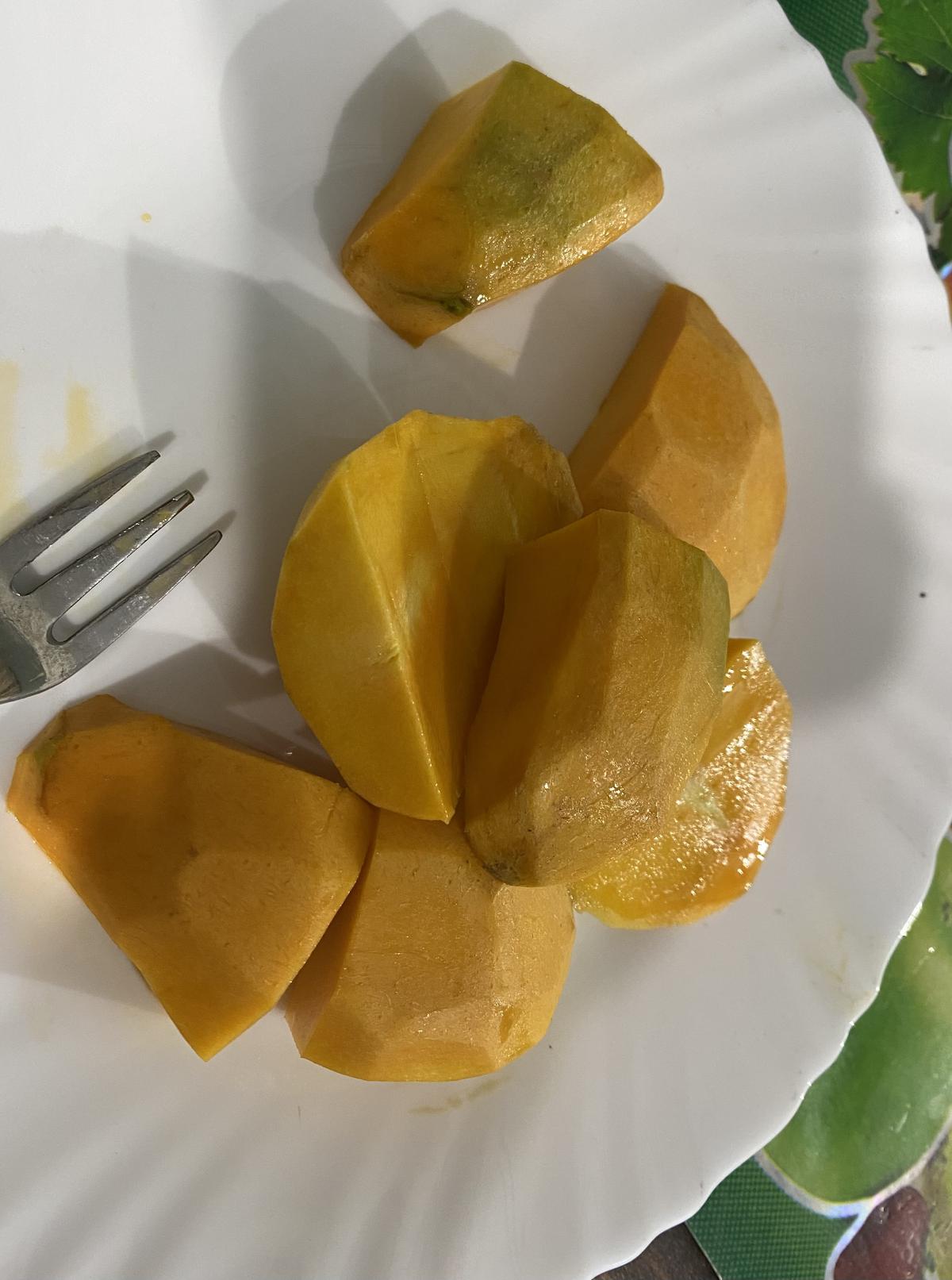The trees are not more than four feet tall and a single tree bears a variety of mangoes
The trees are not more than four feet tall and a single tree bears a variety of mangoes
“This is from the tree which bore the ‘Patricia’ first,” says Joseph Francis placing a plate of sliced golden mango on the table. “It has no fibres and the pit is small,” he adds showing the bare mango stone. ‘Patricia’ was created by Joseph, 22 years ago when he found a fledgling mango plant growing on the five cents of land on which he built his house in Mundamveli in Kochi. “The plant was a hybrid between two local varieties from natural pollination. I grafted this and created Patricia,” says Joseph. Patricia is not available in the market but only at his house, he says with a smile. What sets Joseph apart is his roof top mango orchard that now has 50 varieties of mangoes and about 150 plants. “I sell Patricia plants but the fruits are for visitors, family and friends only,” he says.
A businessman he started as a refrigeration technician, and was fond of agriculture since his childhood. With traditional knowledge of plant life, he grafted a local variety called ‘kalluketti’ with the sapling growing on his land. In a few years the tree blossomed and bore delicious, fragrant, juicy medium-sized mangoes. He named it Patricia, after his wife and “a Queen with the same name”. He also received a certificate from Kerala Agriculture University recognising its distinct sweetness and quality.
Come summers and Joseph’s mango orchard is lush with bunches of low-hanging mangoes. It was in 2010 that the family visited the Flower Show and saw for the first-time mangoes growing in sacks. “It started from there,” he says.
Growing technique
The trees in bright blue, high density plastic oil drums grow in a mix of coco peat, cow dung and red earth. Joseph keeps the trees low at four feet by trimming them regularly. “The height is your choice,” he says. He tills the top soil monthly, which is kept damp at the bottom of the drum, and regularly trims the roots. A weekly spray of Nitrogen, Phosphorous and Potash mixture is applied “This helps the plant to grow and bear more fruit,” he says. The mangoes are wrapped in newspaper and left to ripen for eight to 10 days.
New mango saplings are created through “layering”
Joseph creates new plants by “layering “mature plants. A method in which the bark is removed and covered with soil until roots appear. “These are then cut and planted,” he explains adding that the plants begin to bear fruits within a year.
The layered plants don’t have a tap root but are fibrous. That is why the tree is susceptible to fall during strong winds.
Some of the varieties in the orchard are Alphonso, Imampasand, Malika, Dusseri, Kolambu, Kosseri, Sindhoor and Sindhooram, to name a few. Different varieties are grafted on to a single tree. “It’s best to not to have more than two to three varieties grafted on a single tree as that affects the yield,” says Joseph. Though he does not sell the fruits he retails the plants instead. The cost of a mango plant ranges from ₹15,00 to ₹5,000 depending on the age and size.
Before Joseph turned to growing only mangoes, he tried his hand at orchids, roses and even mushroom farming. He also kept pigeons and bees.
“It’s my passion. I tend to the trees as one would to a three-year-old. I feel their requirements and care for them. I am very, very happy,” says the 65 -year-old who spends three hours in a day tending the mango trees.

























